As a teacher, having plants in the classroom can take your teaching game to a whole new level. I absolutely loved having plants in my classroom when I was teaching, and I know my students did too!
And I wasn’t alone. For many of us, having at least one plant in our indoor learning environment is a must.
Take teacher and comedian, @mrdtimes3, for example. Self-confessed ‘plant daddy’, he is a big believer in plant power in the classroom!
So, just what is all the fuss? Why do people ‘go gaga’ over a bit of greenery?
We’re here to tell you exactly that! If you’ve not yet heard all the positives of growing indoor plants at school, you’re in for a treat (and a trip to the plant nursery).
5 Benefits of Having Plants in the Classroom
There are SO MANY benefits of growing plants in your room. We’ve tried to pick out the most important ones to show you just how great they are for you, your students, and their learning!
There are hundreds of different plants you might choose for your classroom, so check that they are all appropriate for indoor living, allergy-friendly, and won’t be releasing any potential nasty toxins. Cassie’s blog The Best and Worst Plants for the Classroom can give you a headstart if you’re not sure what to look for!

Irina Polonina/Shutterstock.com
#1 Plants Freshen the Air
Did you know that plants help remove pollutants from the air by absorbing them into their roots and leaves?
Or that plants use photosynthesis to absorb carbon dioxide and light energy through their pores? This helps to counter CO2 in the air by releasing oxygen, which can help improve brain productivity.
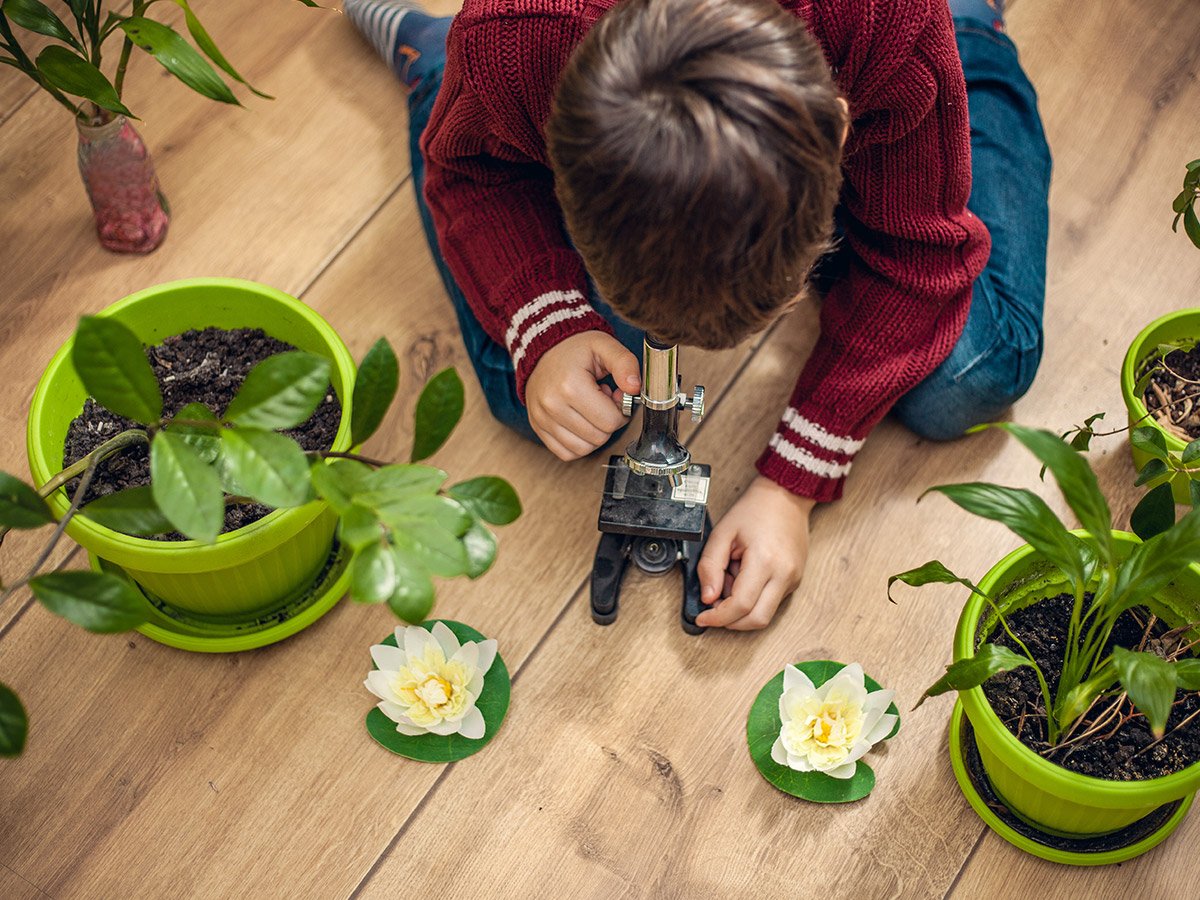
Una Shimpraga/Shutterstock.com
Depending on which plants you select, you can be doing your classroom environment a great service by putting just a few big leafy plants in the corner. You can even increase or decrease the humidity in your classroom! This can help children with breathing problems, and improve overall air quality.
#2 Plants Improve Students’ Mental Wellbeing
It’s no secret that plants can add a touch of freshness and vibrancy to any dull windowsill! This aesthetic appeal helps students and teachers alike feel more happy in the classroom. Introducing plants can turn an otherwise stuffy classroom into a thriving environment which your students will be drawn to.
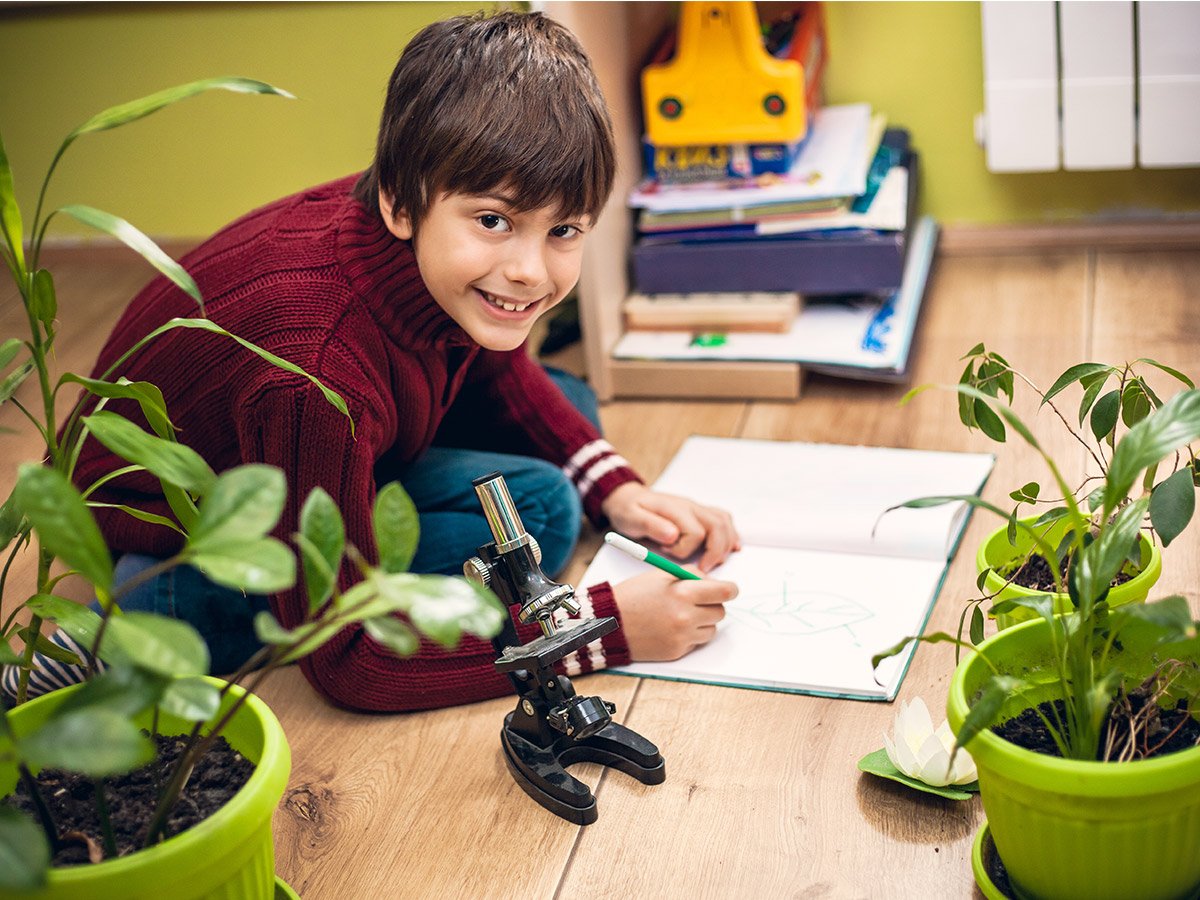
Una Shimpraga/Shutterstock.com
In fact, there’s a scientific term for this!
Biophilia: A love of life and the living world; the affinity of human beings for other life forms.
www.dictionary.com
In layman’s terms, this means that human beings are subconsciously drawn towards nature. It’s in our DNA!
Studies have also shown that classrooms that contain plants can contribute to the psychological wellbeing and development of children. It has even been proven that plants in the classroom reduce:
- student anxiety
- sickness
- absenteeism.
All this from a humble little plant.
#3 Plants Raise Environmental Consciousness
We are all about environmental awareness at Teach Starter! So we think this is one of the best reasons to have plants in your classroom!
Help your students see how much time and care needs to be taken to help plants thrive.
It’s easy for students to walk down the street and just let plants pass them by. A tree is just a tree until you develop a greater awareness of nature.
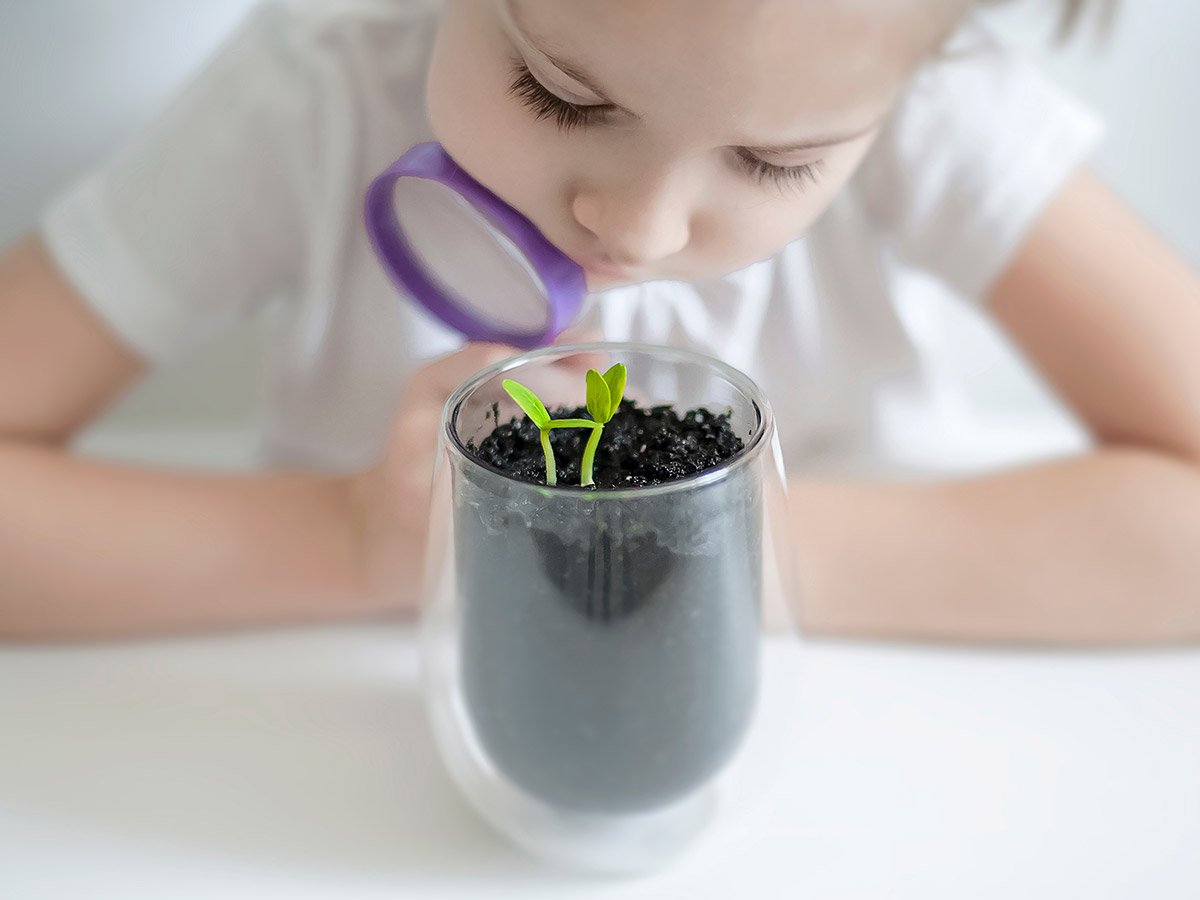
Igor Pushkarev/Shutterstock.com
When students are able to see the effort and care needed to grow plants, they develop a sense of ownership for these living beings. Developing awareness of how precious nature is can help them become connected to their environment outside of the classroom.
This, in turn, will help develop a love for the environment which will benefit the Earth for years to come!
#4 Plants Make Great Lesson Subjects
This one’s a no-brainer!
Having plants to study first hand is the best way to teach students about living things and plant biology. Using living specimens can help students study plant growth over time, as well as see the changes different variables can have on plant survival.
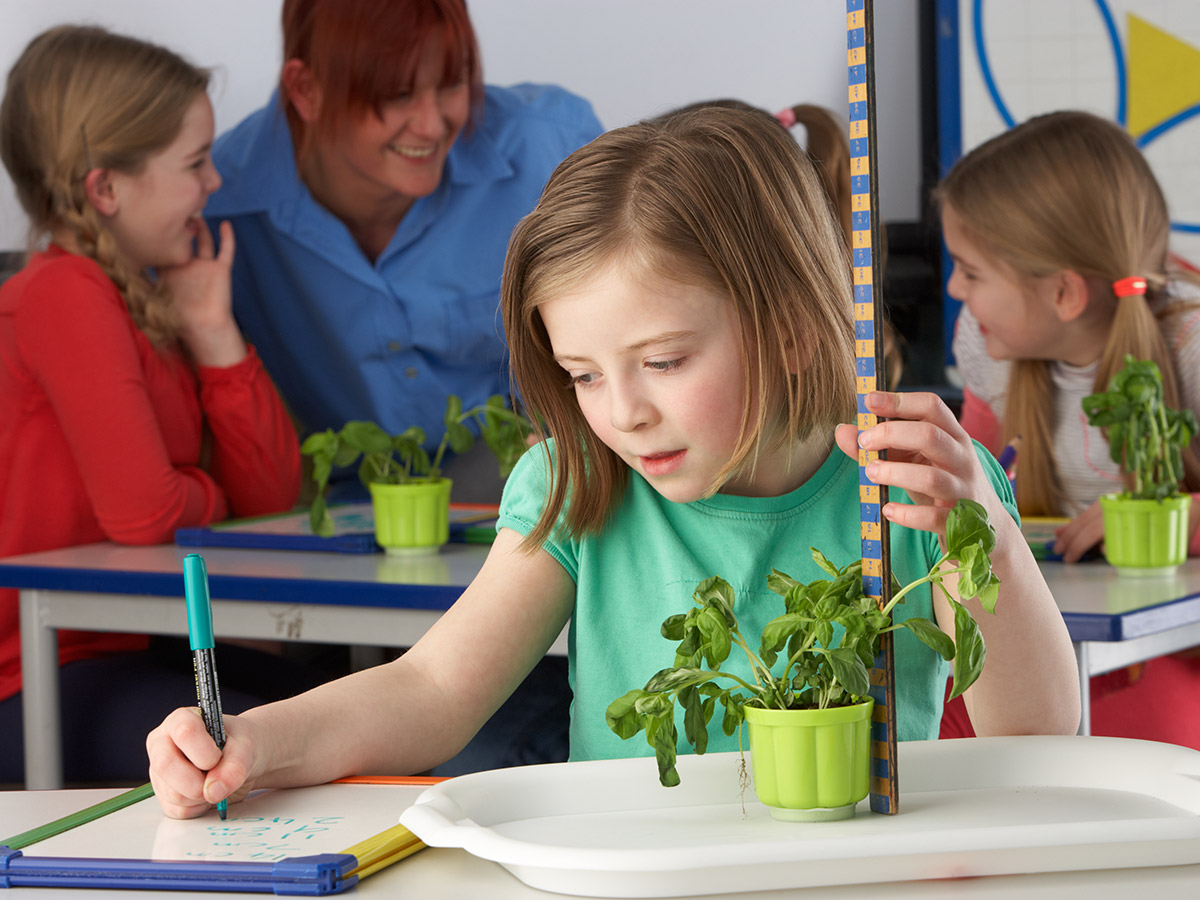
oliveromg/Shutterstock.com
Check out some of these resources to see how you can incorporate plants into your science lessons:
[resource:990474][resource:12864][resource:3686][resource:52291]
As well as biology, using plants for lessons in subjects such as mathematics and art is a great way to encourage your students to be involved. Why not try to incorporate some of these lesson ideas:
- measurement of plant growth and leaf size
- still life drawing of plants and leaves
- hands-on learning areas of different environments/landscapes
- narrative writing stimulus using a unique-looking plant.
#5 Plants Encourage Responsibility
Having plants in the classroom can be a lot of effort if the teacher is solely responsible for their care.
Encourage your students to be responsible for caring for the plants in the classroom! Educate your children on how the particular plants you have should be cared for, and what they can do to help them thrive.
Our Class Garden Posters are great for giving students tips!
Add ‘caring for the class plants’ to your list of classroom jobs – this task will have students jumping at the chance to show how responsible they can be.
So grab some cute pots and head to the nursery to start your very own classroom plant collection!
What’s your favourite plant to put in the classroom?
Banner image: Una Shimpraga/Shutterstock.com

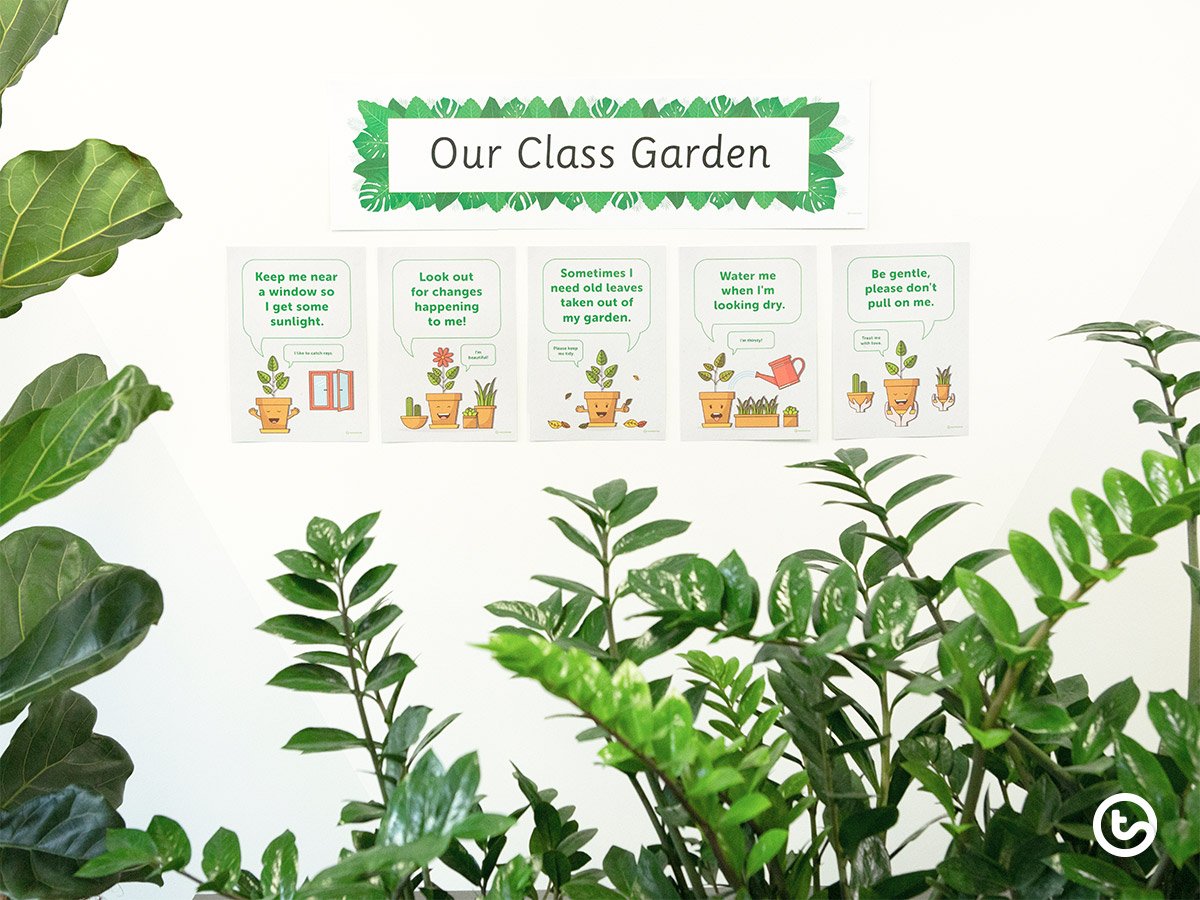






Comments